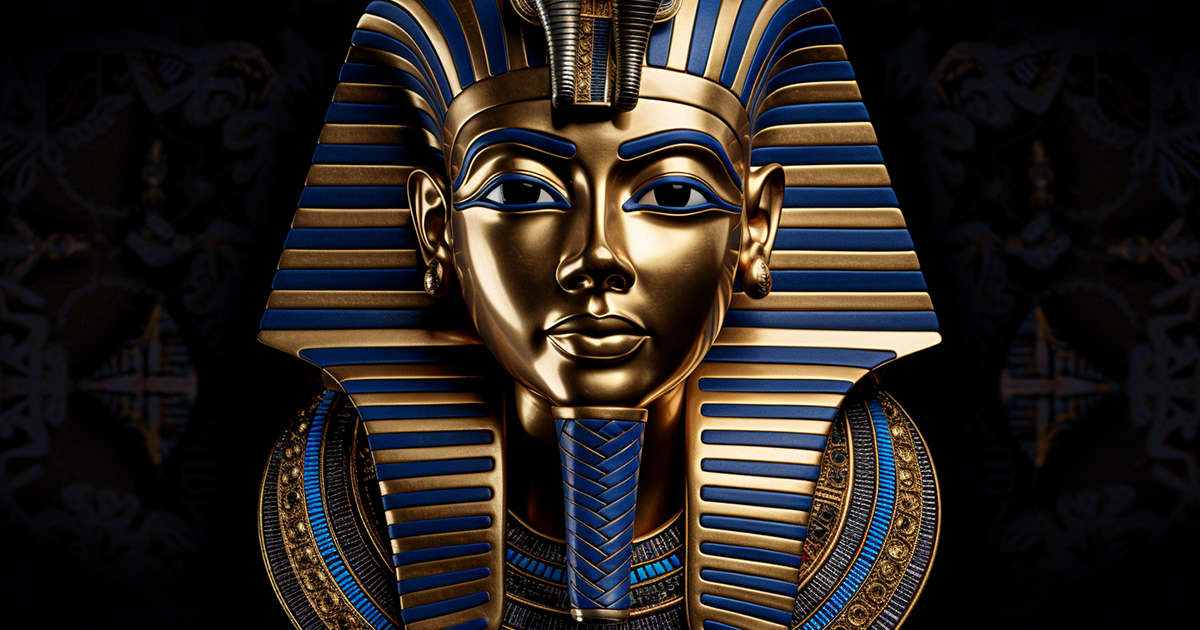A Brief Overview:
The figure of King Tutankhamun, better known as King Tut, resonates through centuries with a resonance like few others. However, behind this famed moniker lies an extraordinary account filled with curiosity, enigma, and a handful of rather peculiar details. Thanks to thorough investigation and advancements in DNA analysis, our comprehension of this young pharaoh has expanded. This piece will explore the strangest and less-known truths about King Tut, illuminating the essence and heritage of the Boy King.

1. A Regal Transformation:
Prior to assuming the throne, King Tut bore the name Tutankhaten, signifying “living image of Aten.” Upon becoming pharaoh, he embraced the title Tutankhamun, symbolizing his reverence for the god Amun, the principal deity of Egyptian mythology. This renaming was, essentially, a significant elevation for Tut, underscoring his divine role.
2. A Complicated Lineage:
Intermarriage was a prevalent tradition among Egyptian royalty to safeguard noble bloodlines. It is believed that Tut’s parents were siblings. DNA examinations affirm that his mother was the biological sister of Pharaoh Akhenaten, often regarded as Tut’s father. Yet, the true identity of Tut’s mother remains shrouded in mystery.
3. Physiological Anomalies:
Tut’s royal ancestry came with a downside – an array of physical abnormalities. In contrast to the image of the robust young pharaoh, Tut likely suffered from a pronounced overbite, a crooked back, a clubfoot, narrow hips, a distorted visage, epilepsy, and even developed breasts. His brief existence was probably marked by agony and distress.
4. Dependency on Aid:
Tut’s clubfoot necessitated the utilization of walking aids. His tomb yielded over 100 distinct walking sticks and canes, alongside specialized stools employed for archery. These artifacts offer insight into his physical state and the obstacles he confronted.
5. A Brief and Unremarkable Sovereignty:
Ascending to the throne at a tender age of nine, Tut relied on adept advisors to steer him. Horemheb, the Commander in Chief of the Egyptian army, and Grand Vizier Ay played pivotal roles during his reign. Ay succeeded Tut as pharaoh, succeeded by Horemheb, who endeavored to eradicate Akhenaten, Tut, and Ay from historical records.
6. A Complex Matrimony:
Tut wed his half-sister, Ankhesenamun, following royal conventions. However, their familial ties were intricate. Ankhesenamun might have also been wed to Tut’s father, Pharaoh Akhenaten. Thus, Tut’s spouse was not solely his half-sister but conceivably his blood sibling and even his stepmother.
7. Heartbreaking Demise of Descendants:
Within Tut’s sepulcher rested the mummified remains of two infants, verified through genetic scrutiny to be his offspring with Ankhesenamun. Unfortunately, one of them suffered from a severe spinal defect, and both seemed to have been stillborn. Intermarriage likely contributed to their tragic fates.
8. The Enigmatic End:
The circumstances surrounding Tut’s premature passing are myriad, ranging from genetic anomalies and ailments to foul play. Recent investigations propose that he perished due to a malarial infection subsequent to fracturing his leg. Genetic predispositions probably debilitated his immune system, rendering him susceptible to such conditions.
9. The Legend of King Tut’s Curse:
The tale of the “Curse of the Pharaohs” didn’t commence with King Tut, but it garnered immense notoriety post the discovery of his tomb. Several members of the expedition perished shortly after, fostering superstitions. Skeptics posit that most casualties were among elder or high-risk individuals, yet the myth persists.
10. King Tut in Contemporary Culture:
King Tut’s unearthing in 1922 triggered a cultural frenzy dubbed “Tut Fever.” It even inspired a villain in Batman, King Tut, portrayed by Victor Buono, who fancied himself as the ancient Egyptian monarch. Moreover, Steve Martin’s comedic track “King Tut” soared to popularity, claiming a spot on the Billboard Hot 100 chart.
Visual Content:
Final Thoughts:
Though King Tut’s life was brief and overshadowed by physical adversities, his influence endures as one of history’s most enigmatic figures. From his intricate familial ties to his bodily afflictions, King Tut’s tale continues to captivate and bewilder, serving as a testament to the intricate and peculiar nature of history.
